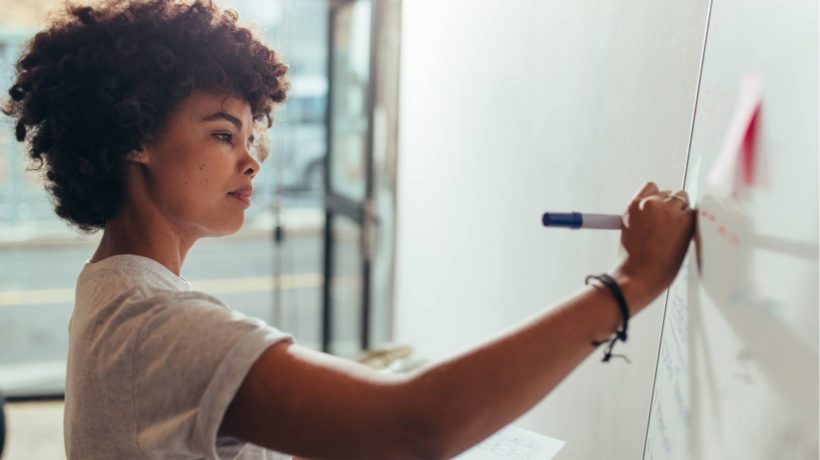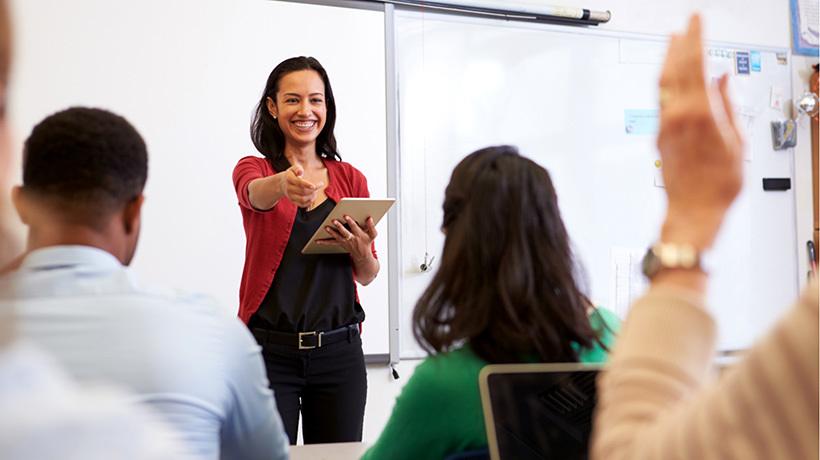Switching To Blended Learning With Limited Resources And Formidable Results
Surely, you must have heard delighted reviews of a blended learning approach. You may even think that you teach in it. But is it really a blended classroom, or is it something else masquerading as one, behind all the cool gadgets and expensive toys? Let’s unmask a blended learning approach and see how you can turn your classes into a new advanced classroom, with limited resources and formidable results.
Differentiating Learning Approaches
The main criteria by which anyone can distinguish different teaching approaches is where actual learning occurs:
- Brick-and-mortar classrooms.
As classical as you can get. Most of the learning happens in school, and the only kind of self-studying that students perform on their own is when they need extra-credit. Homework is usually handed in on the actual paper. - Technology-rich classrooms.
This is where things get muddled. This is a class that uses edTech gadgets, like electronic whiteboards, e-text books, Google docs, virtual reality goggles, and so on. Basically, the conduct of learning and teaching is the same as in the regular brick-and-mortar class, just with cooler props and less paper involved. The learning is still done in class, yet because of the almost paperless workflow some people treat this type of learning as blended. - Online classrooms.
Understandably the least favorite among K12 teachers. Online learning is characterized by no class attendance; no face-to-face learning; and individual study pace and path: Combined, they cannot be applied effectively to schools. - Blended learning.
It successfully mixes face-to-face teaching with online learning and keeps both activities effective and coordinated. It is the main distinctive feature: Students conduct part of their learning online, and the other part in school.
Setting A Proper Frame
Usually reserved in my writing, I am unable to stay so impersonal this time. Below you may find details on the way my blended classroom works, and I promise to give as objective an opinion as humanly possible.
After the release in 2014, Google Classroom is conquering votes of teachers in K12 around the globe. No, not conquering, really. Donated to the educational institutions worldwide, it has attracted a lot of attention because it is:
- Free of charge,
- Extremely easy to use, and
- Familiar and affordable.
To get started, you need your gmail account, a computer, and internet connection. Google Classroom’s interface is easy and simple. Most importantly, you already know it: You have probably used gmail and Google docs before.
Some schools prefer Learning Management Systems, more advanced software used to run big institutions, yet not all schools can afford to pay for that kind of programming and not all schools actually need that kind of advancement.
With Google Classroom, you should start with creating classes and then adding students to your class. Creating an assignment is easy and everybody in your class will receive email with it on their gmail. Students can submit their papers in Google docs, and you’ll be able to view and mark them. No paper involved.
Just that of course, doesn’t make it a blended classroom. So now that we have a frame, let’s fill it up and transform Google Classroom into a blended learning platform.
Enter Integration 1: Actively Learn
Among many integrations and tools available, I’m sticking with Actively Learn. It is a tool that helps teachers make students read thoughtfully and develop critical thinking.
Reading should be challenging, yet encouraging. When my students read, I want them to engage, to immerse themselves in their reading.
Actively Learn lets you add questions to the text: The student should pause and answer the question before continuing. With data on words they looked up, time they spent on each reading, and your questions answered, you’ll know exactly how well they learned the material.
The tool provides a broad catalog with texts and articles on social studies, science and foreign languages. Besides, you can add your own files to the library as a Google doc or a .pdf file.
Actively Learn offers a free option in their pricing plans and this can be a good start for a school with limited resources. You can also choose to go full school or just with an individual teacher.
New Actively Learn workflow shook my students up a little bit at first, when they’d realized they couldn’t just skim-read a story anymore. After a while, they started sharing comments and engaging each other in reading. They are now reading not just the assigned material, but extras they find in the catalog.
Enter Integration 2: Unicheck
After reading is done, I like to give my students another challenge in the form of a writing task. Their papers should be as thought-through as their reading was. I demand their own ideas, and I also accept when they build up their analysis on ideas and opinions of others. One thing I do not tolerate in papers is the unattributed source.
Google Classroom has just got a freshly baked integration that makes my work a bit easier. Unicheck is a tool that checks papers for text similarities; it seems to be the only similarity checker that integrates with Google Classroom. With a feature of recognizing sentences that might have been borrowed from the internet, it is exactly what my blended classroom needed.
To integrate Unicheck into Google Classroom, you need to create your account in Unicheck first and then choose integration with Google Classroom. It is an easy 5-step process. In your personal cabinet, you’ll see all your classes and folders that have been automatically transferred to Unicheck.
When students submit their papers via Google Classroom, Unicheck checks it automatically and sends a report to your gmail. In the report, you’ll see percentage of original text, similarities with the internet and your Library, citations and references, all of them highlighted in the body of the paper.
Unicheck does not suggest any grades or judges regarding papers it checked, but it gives you an idea of what the paper you are evaluating is made of: How much was borrowed without attribution, how much was original, and what sources students made use of.
Before using it, I ran a background check on Unicheck. It is quite loved by higher ed institutions, as it is teacher- and student-friendly. Unicheck’s team will listen to your feedback and suggestions, and their support is ready to guide you through any process. They also have new pricing plans and their main features are available free of charge for many countries.
My students didn’t understand the purpose of the similarity checker at first, but after they have learned how to format citations and references, including their own old papers, they are quite happy with the way we are working online, and in the classroom setting.
Bottom Line
So in a nutshell, this is how a blended classroom works. The topics and exercises don’t clash; learning remains deep and engaging; and everybody, including parents, knows exactly what is going on.
We don’t need expensive, yet not so useful in actual learning gadgets. We need smart soft that helps teachers and students achieve results in learning. Teachers are the source of guidance and wisdom in this matter. Together we can blend the best educational practices and raise a generation that learns, reads, and thinks in a new, better way.









